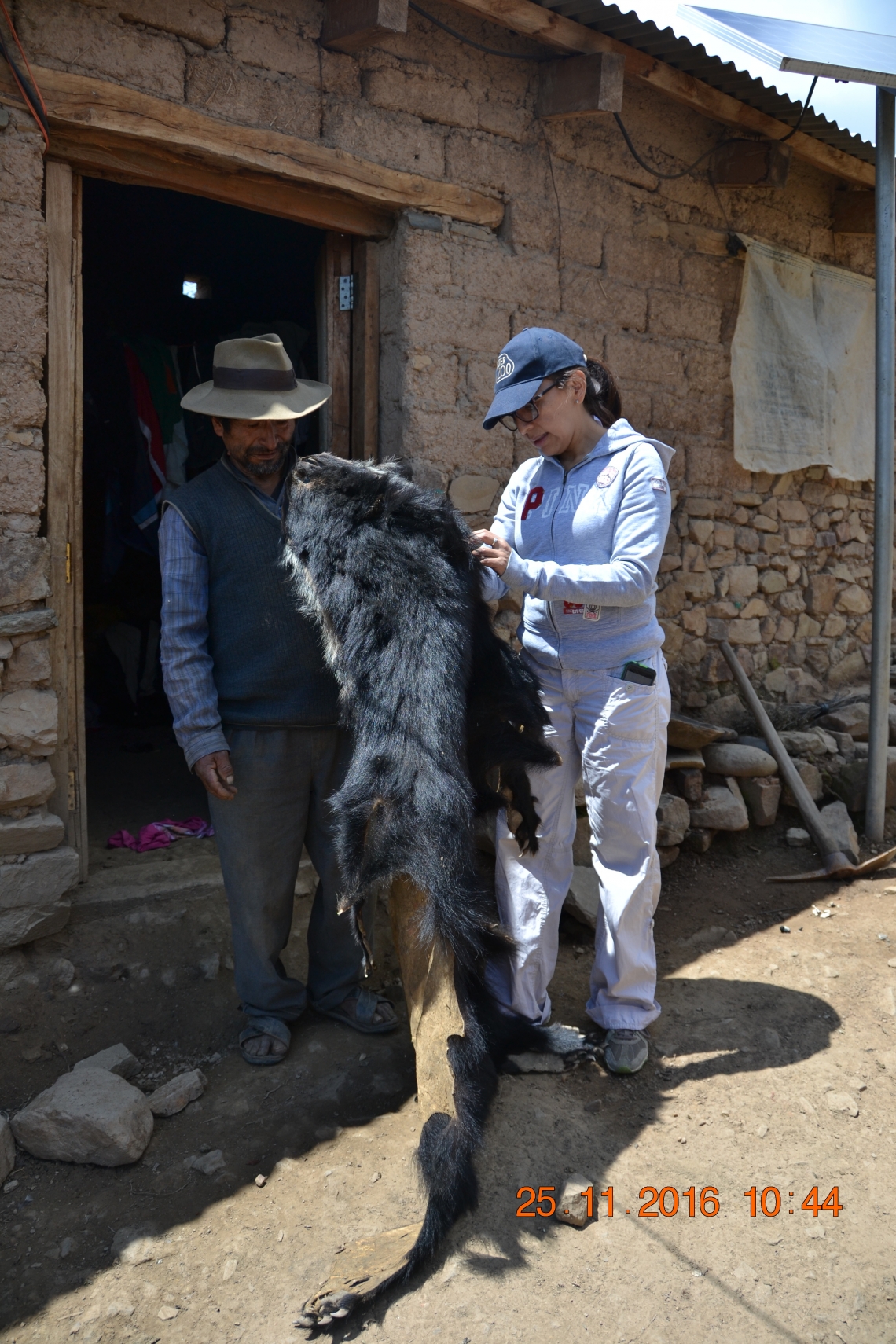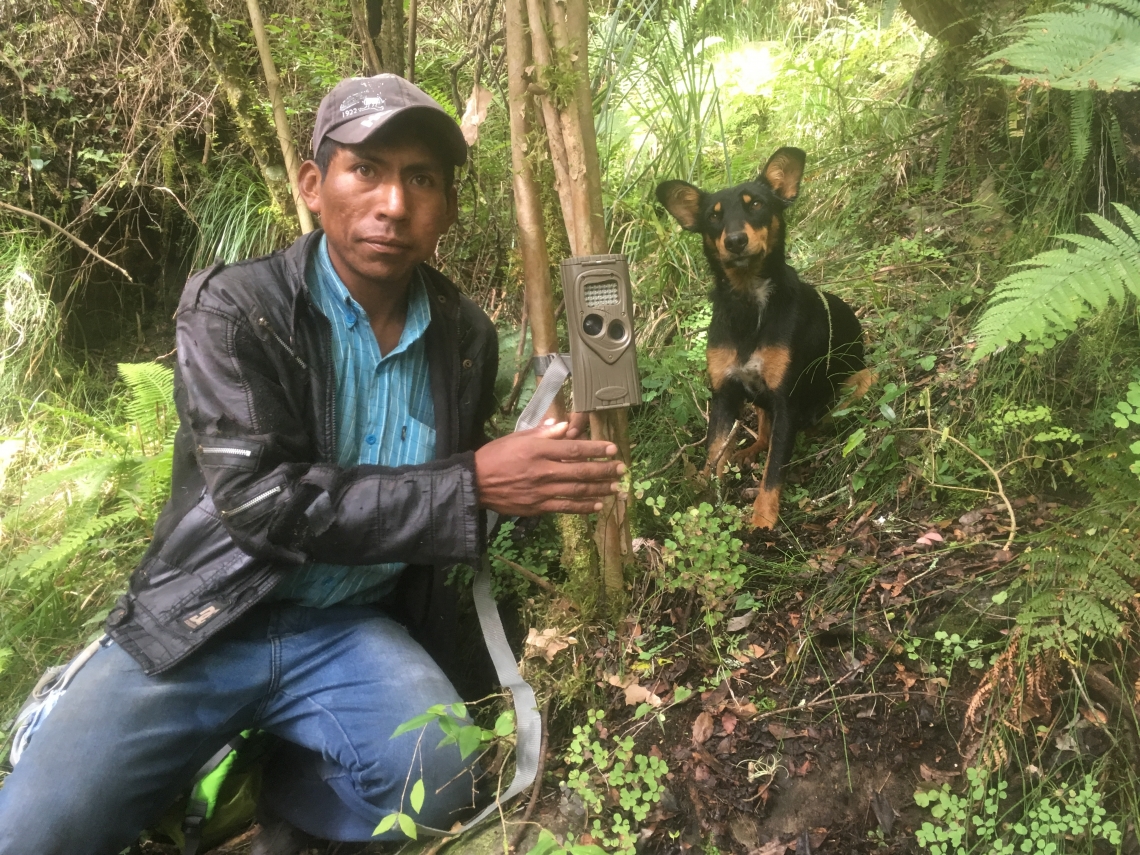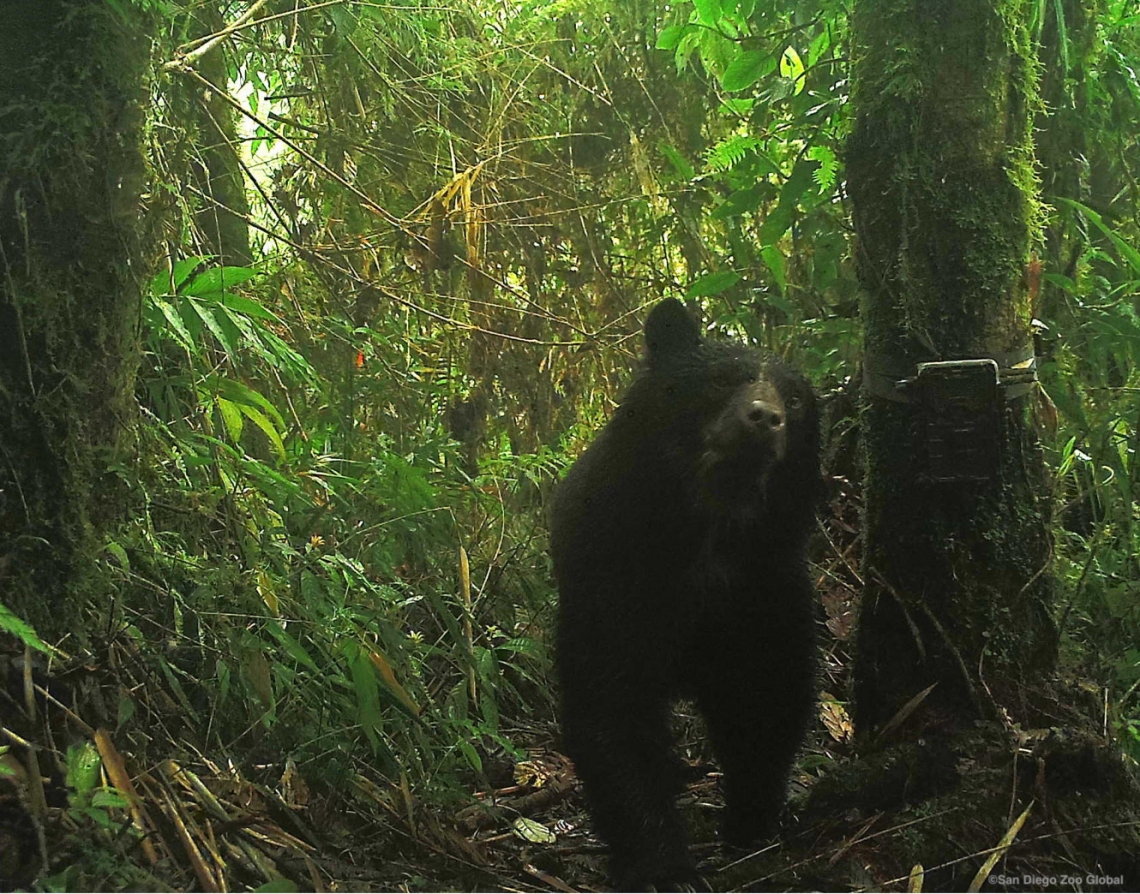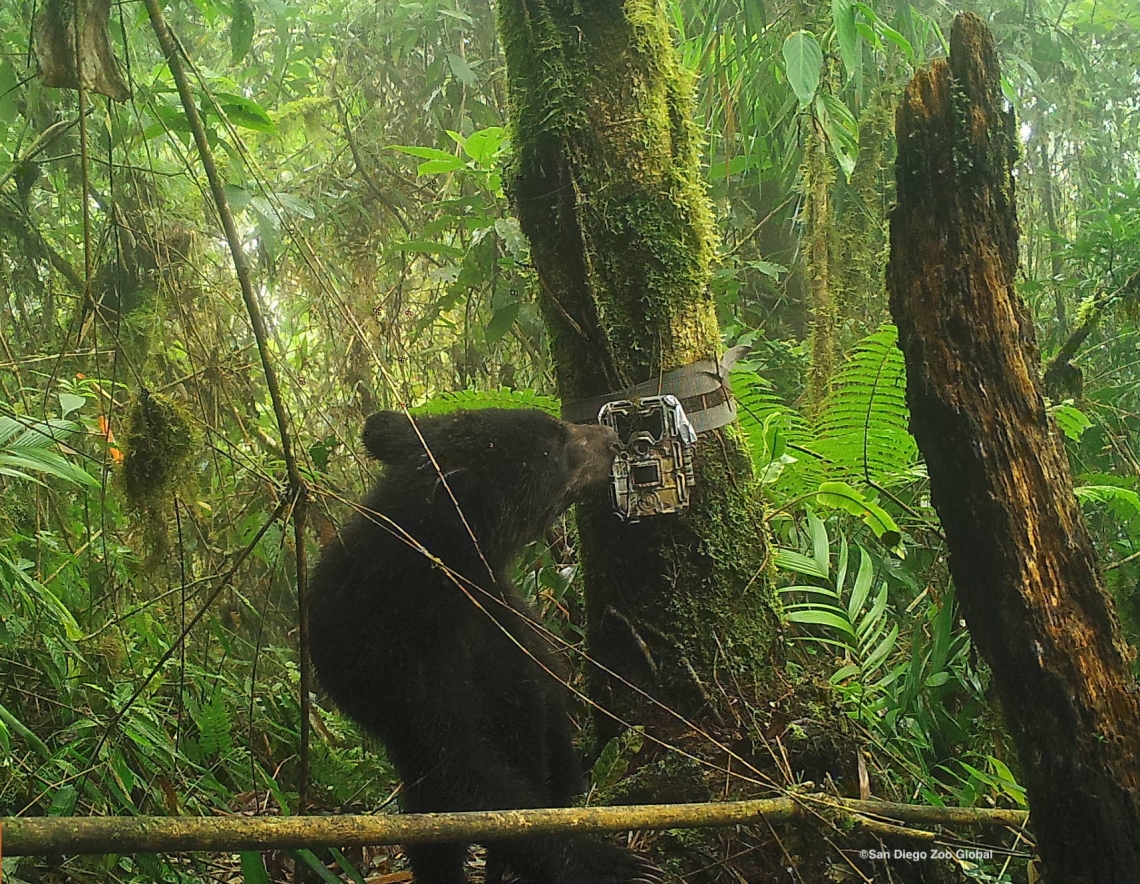Causes of mortality: There have been no formal studies of mortality of Andean bears, but deaths due to human–bear conflicts and other illegal hunting have been most readily observed. An average of about 180 bears are known to be killed per year across its range—it is suspected that the real number is much higher. Bears are killed for retaliation against crop or livestock depredations (or protection against future depredations), for cultural or medical beliefs, and, to a lesser extent, for commercial trade.

Andean bear_Tarija Bolivia_bear skin_Ximena Vélez-Liendo
Population estimation methods: Various methods have been used to produce “guesstimates” of Andean bear numbers. A few have used reliable quantitative methods, such as genetic mark–recapture, mark–recapture based on facial recognition in camera trap photos, or simply adding up different individually identifiable bears and not counting those that were never photographed (yielding a minimal estimate).

Andean bear_T ornatus_Bolivia_field assistant setting camera trap_Ximena Vélez-Liendo

Andean bear_T ornatus_Kcosñipata Peru_adult Andean bear next to camera trap_San Diego Zoo Global

Andean bear_T ornatus_Kcosñipata Peru_subadult Andean bear sniffing camera trap_San Diego Zoo Global
Local population estimates: All empirically-derived density estimates indicate that Andean bears exist at a low density (3–8 bears/100 km2) across their range.
Country and global population estimates: Assessments applying different approaches estimated 1,100–1,600 bears in Venezuela, 3,000–6,000 in Colombia, 1,200–2,000 in Ecuador, ~5,000 bears in Peru, and ~3,000 bears in Bolivia. These rather crude countrywide estimates yield a range-wide estimate of 13,000–18,000 bears (5-7 bears/100 km2 over its range of 260,000 km2).
Population trends: This species is believed declining across its range due to habitat loss, habitat fragmentation, and illegal killing.